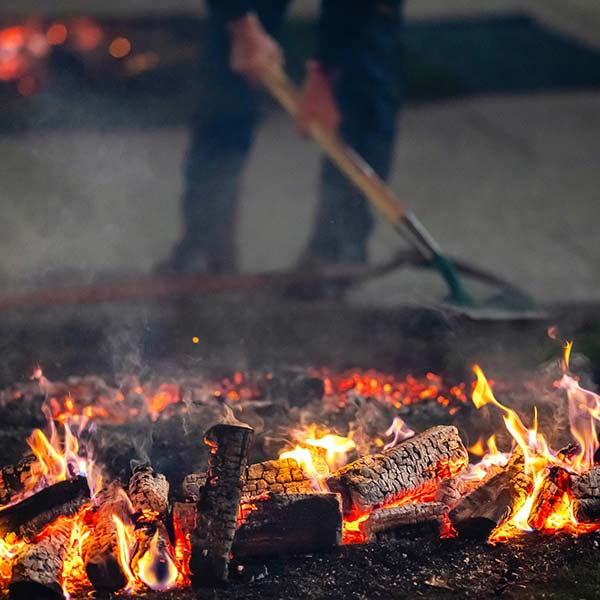
How to not get burned
(according to science)
The mystery behind walking on hot coals and why it works can be understood by examining thermal conductivity. Thermal conductivity, essentially, is an object’s ability to transfer energy in the form of heat to another object. Why is this so important? Because it has everything to do with the transfer of heat from the hot coals to your naked feet.
Coal is comprised of carbon, which, as it turns out, is pretty terrible at conducting heat. And a hot coal, in particular, is covered with a thin layer of ash, which is an even less effective conductor. So what you have is something bad at transferring heat to your skin encased in something even worse at conducting heat (ash).
In addition to a hot coal being pretty weak when it comes to the transfer of heat energy, so, too, are your feet. So, if you’re not spending time lingering over each coal and instead briskly walking across them, there’s a low risk of being burned. Pacing is part of the secret to walking on hot coals: too slow and the coals have a chance to burn your feet. Too fast and your feet will sink deeper into the layer of ash, also increasing your chances of being burned. Those who master the art of firewalking walk swiftly without rushing.
Think of it this way: If you reach into a hot stove and touch a piece of metal in it, you’ll be burned immediately because metal is an excellent heat conductor. But if you reach into a hot stove and briefly touch the top of a cake you’re baking, you won’t be burned because, like a hot coal, the cake’s consistency makes it a poor heat conductor.
“FEAR IS A REACTION
COURAGE IS A CHOICE“
Our events are high impact, motivational and fun!
